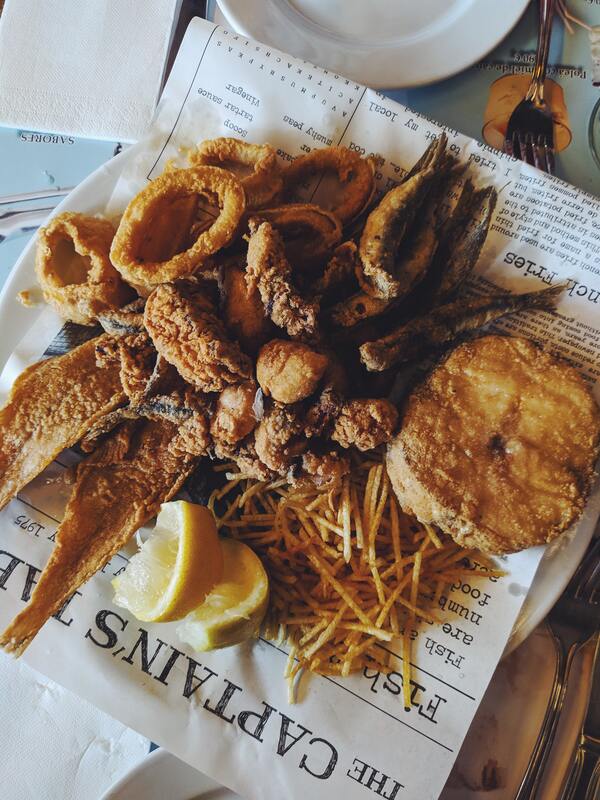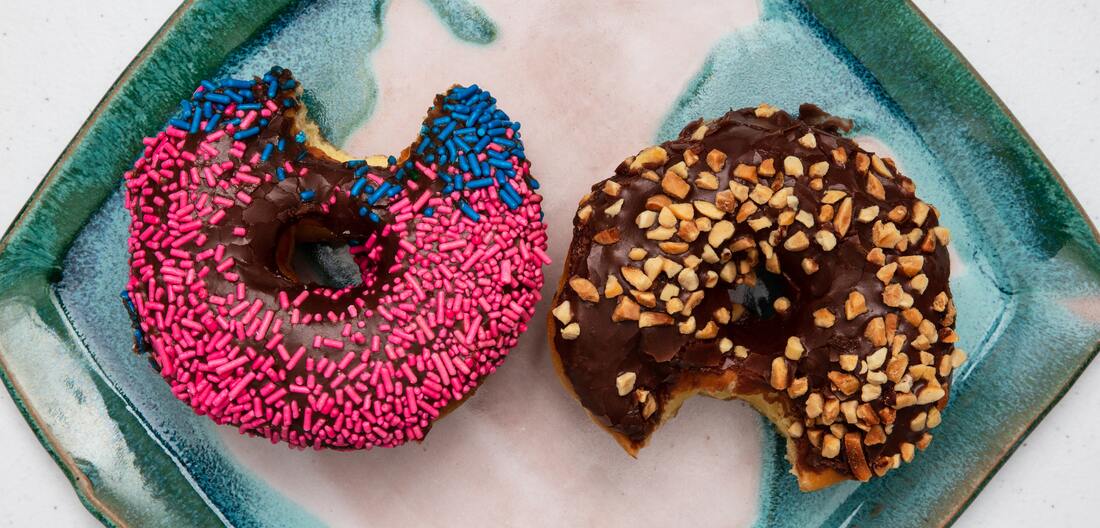|
Lymph massage has been around for 1000s of years across the globe, fom rasa dhatu cleansing in Ayurveda to the art of gua sha in Chinese Medicine, to Manual Lymph Drainage (MLD) developed by Emil Vodder in the 1930s. What do all of these techniques have in common? The facilitation of lymph drainage! Lymph, derived from the Latin word for water, is literally just that - our internal waters that flow through our entire being. You can think of the lymphatic system like a series of rivers & tributaries, clearing waste and facilitating the movement of resources. When that water gets bogged down with waste products and is unable to move, issues inevitably arise. We support the facile movement of lymph through our diet & lifestyle (we really get into this in our Dump the Detox course!), but lymphatic massage techniques can also facilitate the process! I've created my own little lymphatic massage routine for my face. It takes less than 5 minutes and I can really tell a difference before and after! I've pulled from 3 different healing traditions here by using: -An Ayurvedic Beauty Balm by Banyan Botanicals as my oil/balm source. As someone who runs on the dry side, the saturated fat base of ghee + coconut oil plus the infusion of enriching roots like Shatavari really improves the quality of my skin. (Use THIS link and code HERBGIRLS15 for 15% off) -A gua sha rose quartz stone gifted to me by my lovely business partner, Amy Wright. You can also use your hand or the edge of a spoon, but I do love the feel of a cold stone gliding across my face! -Techniques from the Book of Lymph, by Lisa Levitt Gainsley. I found this book very helpful in better understanding the function and flow of lymph in the body, and have incorporated some of her motions at the start and finish of my routine. Directions for Simple 5 Minute Facial Gua Sha RoutineRepeat every motion 10x
Booby Lymph Massage Addendum This routine is for you if you are someone whose boobs get sore the week before your cycle. When our liver is burdened, our lymph will get backed up, too. We often feel this in our boobs because so many lymph nodes live here! If estrogen can't be deconjugated and broken down properly, the build-up can aggravate smooth and seamless lymph flow. I have found that doing this routine daily the week before my period has dramatically reduced my booby tenderness! You can find the full routine in the Book of Lymph - I just pulled out the sections I especially like! Repeat every motion 10x
Tips:1. Don’t press too firmly or too lightly. The pressure is equivalent to removing shaving cream completely from your skin - firm enough that it clears away but not so hard that you are pressing into the muscle (then your routine will turn into a muscular massage rather than draining the lymph which runs just superficial to the muscle) 2. For each movement contouring your face - steps 4,5, & 7 - you always want to move inward to UP and outward, so the final placement of your tool will be a bit higher than the starting point, creating an element of “lift” as you both drain your lymph and train your face to work against heaviness and gravity. 3. At the end of each movement, it’s a nice practice to press and wiggle the tool lightly. This assures you are really helping move the lymph away from your face so it can drain into nodes and be cleared. 4. A cold gua sha stone is my favorite tool for this practice, but the edge of a spoon or blade edge of your hand will also do the job. Place your gua sha stone in the fridge or freezer 10 minutes before your routine to really target puffiness and tiredness in the face. 5. STAY hydrated! Lymph is our body’s internal drainage system and needs ample fluid to flow - especially if we are actively detoxing from something. To keep that river flowing, we need to stay hydrated. Aim for ½ your body weight in fl.oz a day. The quality of your water is also of utmost importance. If we are drinking water straight from the tap, that water is *most likely* already filled with numerous toxins and compounds that our lymph will also have to detox and drain. So make it easy on yourself and invest in a GOOD water filtration system. In our opinion, nothing gets better than LivePristine. It’s worth the investment. Next best option would be a Berkey.
(aka PUFAs!)Saturated fats are fatty acids with carbon chains that are fully loaded (or saturated) with hydrogen bonds. These chains stack perfectly on top of one another, making them solid at room temperature. Think butter, lard, and coconut oil. Unsaturated fats have unfilled hydrogen bonds, creating kinks in their carbon chains which keeps them from stacking on top of one another uniformly. These kinks make them liquid at room temperature. Poly-unsaturated (poly- means many) fats have multiple kinks in their fatty acid chains and mono-unsaturated fats (mono- means one) have one kink. Sesame and avocado oil are naturally produced unsaturated fats; olive oil is a naturally occurring mono-unsaturated fat. While humans love categories, all naturally occurring fats are actually a combination of poly-, un-, and mono-unsaturated fats. Butter, for example, is 25% mono-unsaturated. Why Clear Veggie Oils Are Problematic
"These now rancid fats trigger a cascade of inflammatory processes in the body. This is an issue because clear veggie oils are everywhere from healthy snack foods to fried food at both fancy and fast-food restaurants. We can get all the polyunsaturated fats we need by consuming Whole Food sources of nuts, seeds, & cold water fish. The abundance of clear veggie oils, however, has tipped our fat ratios out of balance. The primary PUFAs to look out for are*: canola oil, soybean oil, cottonseed oil, safflower oil, grapeseed oil, & sunflower oil Get this: the ideal ratio of polyunsaturated Omega 6 (Linoleic Acid, LA) to Omega 3 (Alpha-linolenic Acid, ALA) is 1:1... But the average America has a ratio of ~20:1! This stark imbalance means major inflammation in the body (It’s also the underlying reason why so many health professionals recommend fish oils, or Omega 3s). It makes sense that most people - even health-conscious ones - have an overabundance of rancid PUFAs in their life. Of course anything fried is going to present your body with inflammatory omegas, but ready-made snacks like cookies, chips, crackers, dressings, and sauces are some of the biggest offenders. Since clear veggie oils are often subsidized and very cheap, they are used for baking, frying, and sautéeing at even the fanciest restaurants. It's impossible to avoid every single PUFA as a modern human, but bringing awareness and avoiding them as much as you can will work wonders! Fatty Takeaways
*You CAN find good quality veggie oils that are cold-pressed such as walnut, flax, and sunflower even; however, these are very few and far between, quite expensive, and must be stored in dark bottles away from light and heat.
Nightshades are a fascinating family of over 2,000 species of plants including: Ashwagandha, Bell peppers (aka sweet peppers), Bush tomatoes, Eggplant, Goji berries, Ground cherries , Hot peppers (such as chili peppers, Jalapenos, habaneros, chili-based spices, red pepper, and cayenne pepper), Paprika, Pepino (aka pepino melon), Pimentos, Potatoes (but not sweet potatoes), Tomatillos, & Tomatoes While many nightshades are tasty, many are quite deadly, like the notorious Locoweed (Datura stramonium) or Belladonna (Atropa belladonna). Nightshade sensitivity is an underlying cause in many inflammatory conditions today, particularly those including: muscle and joint pain, morning stiffness, arthritis, insomnia, heartburn, GERD, and autoimmunity. Along with soy, many common nightshades are relatively new to the Western and European diets, not arriving to North America until the 18th century. In fact, the tomato was initially used only as an ornamental plant because it was believed to be poisonous like some of its relatives. Despite their relative new-ness to the Western diet, nightshades are everywhere today: french fries, mashed potatoes, tomatoes, pizza, hot sauce, and let’s not forget tobacco. Here’s why you might want to reduce or avoid these powerful plants all together for a period of time: 1. They are “calcinogenic”. This means they can cause soft tissues to calcify (calcinosis) due to their positive effect on blood calcium levels. The body does not like high blood calcium, so the quickest way to remedy this situation is to deposit the extra calcium into the soft tissues. Each hypercalcemic episode lasts only a few moments but also leaves a small deposit behind. Over time, these deposits lead to the condition known as calcinosis, contributing to hardening of the vasculature. 2. They contain acetylcholinesterase inhibitors. Solanine and similar glycoalkaloids found in nightshades inhibit the breakdown of the neurotransmitter acetylcholine. This causes extended muscle contractions and a major reason why those sensitive to nightshades experience morning stiffness. Solanine also disturbs digestive function (common in IBS-sufferers), gene expression of intestinal cells, and inhibits proteolytic enzyme activity. 3. They contain nicotine, a substance that is both addictive and inhibits proper inflammation in the body when out of balance.
And let's not forget saponins... 5. Saponins can poke holes in your gut - All plants contain saponins, but Nightshades are quite high in an especially corrosive class of them. Saponins are detergent-like compounds that protect plants from predation by dissolving cellular membranes. This is great for protecting the plant’s seeds from predation, but not so great when those saponins damage the cells that line our gut (enterocytes). Saponins can literally poke holes through our cells’ protective walls, creating a case of leaky gut. Essentially, the holes allow things to pass through that shouldn’t be in our bloodstream. While some saponins are beneficial and allow for the absorption of certain minerals without harming the cells, others can be more corrosive and damaging to our intestinal wall. Glycoalkaloids, abundant in Nightshades, are one such class of saponins that aren’t so gentle. Glycoalkaloids (alpha-solanine and alpha-chaconine in potato, alpha-solanine in eggplant, and alpha-tomatine in tomato) are very well studied and have revealed issues with absorption and inflammation in many animal studies. For people dealing with systemic inflammation, autoimmune conditions, and issues with digestion, taking a break from Nightshades is a wise choice. The low-level toxic exposure from glycoalkaloids can aggravate the issues we are trying to resolve. Resources:
In, F. T. A., Out, F. T. A., & Reintroductions, P. ALL ABOUT NIGHTSHADES. McFarland, E. (2013). The Link between nightshades, chronic pain and inflammation. GreenMedInfo LLC. Robertson, P., & Roberts, P. (2003). The Solanaceae and their paradoxical effects on arthritis and other degenerative disease states The unfortunate truth: We live in a bit of a toxic soup these days. From the water to the air, our soil to our food supply, and all the products we use to clean our house, skin, and hair - we are inundated in foreign information that can overwhelm the body. And let’s not forget emotions and endogenous toxins that our bodies must also process! Toxins interact and compound, presenting a major burden to the body if our drainage and detox pathways and cellular metabolism aren’t functioning in tip-top shape. Our bodies are designed to drain and detox toxins.... but there's a problem: the modern diet and lifestyle aren't conducive to supporting daily detox. So, we feel the need to do extreme fasts or cleanses to purge us of all the accumulated crud. But that attitude just presents another issue: the body doesn’t like extremes; it prefers gentle transitions and steady, slow progress. So lots of these crash diets and detoxes just leave us feeling exhausted and deprived. Sure, we might have lost a few pounds, but they will likely come right back, along with the other issues we were trying to remedy with a quick fix. The ideal scenario would be to open and support our drainage & detox organs while also eliminating toxic exposure and build-up... ...which is where an elimination diet comes in. You might be thinking to yourself: "But I believe in intuitive eating and fear that restriction might lead to unhealthy or obsessive thoughts about food." You aren't wrong. Restricting food can mess with individuals who have an eating disordered past, and not everyone is ready for an elimination diet. However, until we take a break from something, we will never know what effect it is having on our body, mind, or spirit. Furthermore, many foods we daily consume could be aggravating or even causing injury to our bodies. Elimination diets don't have to be about deprivation - they should be about nourishing yourself and reconnecting with your body's needs. Unfortunately, food isn't simple anymore and our modern food supply is not clean. Even if you only shop at health food stores, you are still going to be bombarded with rancid oils, denatured proteins, and added sugars. You will find foods that have come from the other half of the globe and foods that have been exposed to chemicals (yes, even organic ones) that confuse and clog your body. When we don't give our body a break, it is going to start malfunctioning sooner or later. A temporary elimination diet, focusing on whole foods can offer that break. Take me for example. I was your classic skinny, cardio-obsessed vegetarian. Whole grains, fruits and nuts were LIFE. At this same time, my gut was in terrible disarray. I had stomach aches and bloating daily and I rarely pooped. An elimination diet would have been perfect for me - not one that restricted calories, but one that gave me a break from the foods that I’d grown sensitive to. My digestive juices had grown weak and lazy (meat requires lots of stomach acid, so if we don’t ever consume it, our body won’t feel the need to make as much), and all those complex carbs I was consuming were not breaking down like they should have. Instead, they were passing into my colon undigested, serving as a food source for bad bacteria, causing all that dysbiotic bloating and cramping. And every morning I ate my grape nuts, oat milk, and raisins, I was just repeating the vicious cycle all over again. If you gave 21-year old Eileen some bacon and eggs, a warm bowl of pumpkin soup, chicken piccata and roast carrots, I would have watched my digestive fire return and my bloating and dsybiosis dissipate as I starved the bad bacteria that had colonized my gut. That meal plan doesn’t sound like restriction does it? I guess that’s the whole point of this article: What about food sensitivity tests? There are gobs of tests out there that will quickly tell you your sensitivities without having to actually eliminate anything. However, even with all that technology, a good ole’ fashioned elimination diet + slow reintroduction still remains the gold standard of uncovering food sensitivities. Cross-reactivity is a thing, and even if it seems like a quick-fix, oftentimes those tests will come back showing that you are sensitive to everything (true story!). So save yourself the money and confusion, and consider doing an elimination if you know something is going on with your gut health but don’t know where to start. "Shortcuts make long delays." - J.R.R. Tolkien, The Hobbit In our newly launched 5-week program Dump the Detox, we've included a 3 week elimination diet (called "The Spring Clean") plus a 1 or 2 week Reintroduction period. This course not only allows you to take a break from certain foods that may be harming you, but also walks your through the drainage and detox funnel. This way, you learn how to open and nourish those pathways systematically so your body can handle toxins better & you can live life more freely! In the blogs to come, we will be explaining the why behind eliminating the food groups we do in our Spring Clean. See you there!
|
Eileen Brantley & Amy WrightWe are Herb Girls Athens, LLC. Read our blog! Archives
November 2022
Categories
All
|

















 RSS Feed
RSS Feed
